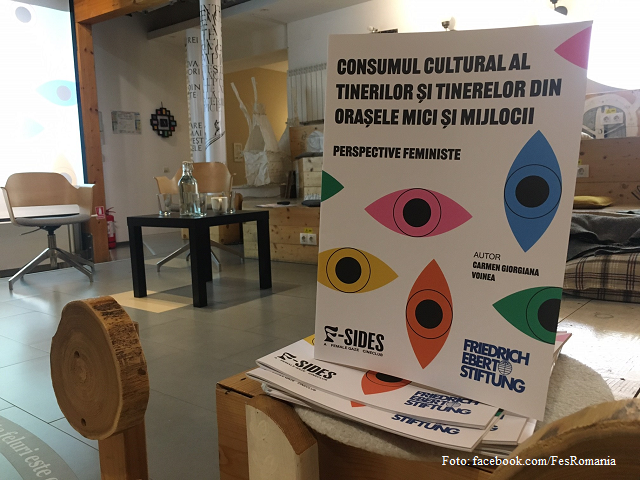Youth Access to Culture in Small Cities and Towns
Culture is not just a value in itself, but also an instrument to enhance other values

Christine Leșcu, 22.02.2023, 14:00
Culture is not just a value in itself, but also an instrument to enhance other values. Also, in today’s world, cultural spaces are not just places dedicated to culture, but also vehicles for social and political principles and attitudes. Based on these principles, the study called Cultural Consumption Among Youth in Small Cities and Towns, supported by the Friedrich Ebert Foundation of Romania, sought to see to what extent cultural activities in smaller urban spaces overlap with the feminist perspective, and if young people associate cultural manifestations with social values. Another premise of the research was the precarious state of culture infrastructure in smaller cities, such as the scarcity of libraries, shuttered or non-functional culture centers, or with a shifting use. The research included 225 youth between 13 and 20 years of age, 75% of which are girls. This majority of female participants was not intentional on the part of the researchers, it is just that more girls opted to fill in the questionnaires and take part in interviews. We were told this by Carmen Voinea, the coordinator of the research, who told us that respondents made a clear connection between a certain kind of cultural consumption and gender issues:
“What we noticed in their answers was that, crisscrossing cultural consumption, there are larger issues related to gender equality and social inclusion. Some of their needs were, for instance, the existence of cultural spaces in which diverse people, including the LGBT community, may feel safe. What also emerged in questionnaires was the need to solve community problems through culture. In addition, many of the people we spoke to told us that they started getting familiar with feminism and gender issues through film. We tried to see their subjective relationship with these spaces. Even though we have, on paper on in reality, museums, libraries, cultural centers, they are not very attractive to young people. Their content is not adapted to them. They feel a need to be involved in a more participative role, to become co-creators in some cases, involved in these cultural spaces and their products. The fact that we had more female respondents indicates a higher interest on the part of young women in cultural consumption, and the way in which it intersects with feminism.
The cultural consumption of young people depends on the cultural infrastructure and its offerings, just as their habits reflect that variety and richness of these offerings, or their scarcity:
“First of all, we noticed that the most common cultural activities of teenagers are solitary and domestic. Also, the cultural activities available to them in public spaces are not very diverse, or adapted to them. In addition, even though a high percentage of them believe that going to the movies is attractive and interesting, 45% of them said that they have not viewed a film in a movie theater in the previous year, and, more than that, 48% of respondents said that they had to travel to a nearby town or city to reach one.
Many young people stated that they wished they had a movie theater in their town. The research revealed that, in their mental maps, the old, shuttered movie theater was a meeting point, even when they had never been to a movie there. That being said, this research also has some good news:
“Libraries, as they appear in the mental maps of youth we drew with them, were a surprise. In some towns, libraries offer to youth not only a space for reading or a place to borrow books, but also a space where they could come up with their own activities, such as the Korean culture club, or karaoke evenings. In Calarasi and Slatina, for instance, some young ladies said that the library is their favorite space in town. In the library they found a space where they could develop, and in which they were able to take part directly in cultural consumption as co-creators. In fact, public spaces continue to be most frequented by young men and women. 70% of the places they go to consume culture are public. At the same time, when it comes to discussing feminist issues, they usually resort to private and informally set up places. So, even if public infrastructure continues to be their go-to place, there they don’t find enough opening to tackle feminist issues.
In conclusion, the study called Cultural Consumption Among Youth in Small Cities and Towns recommended to authorities to work on reviving cultural activities in public spaces, and to make them more inclusive, because there is demand for it out there.






























